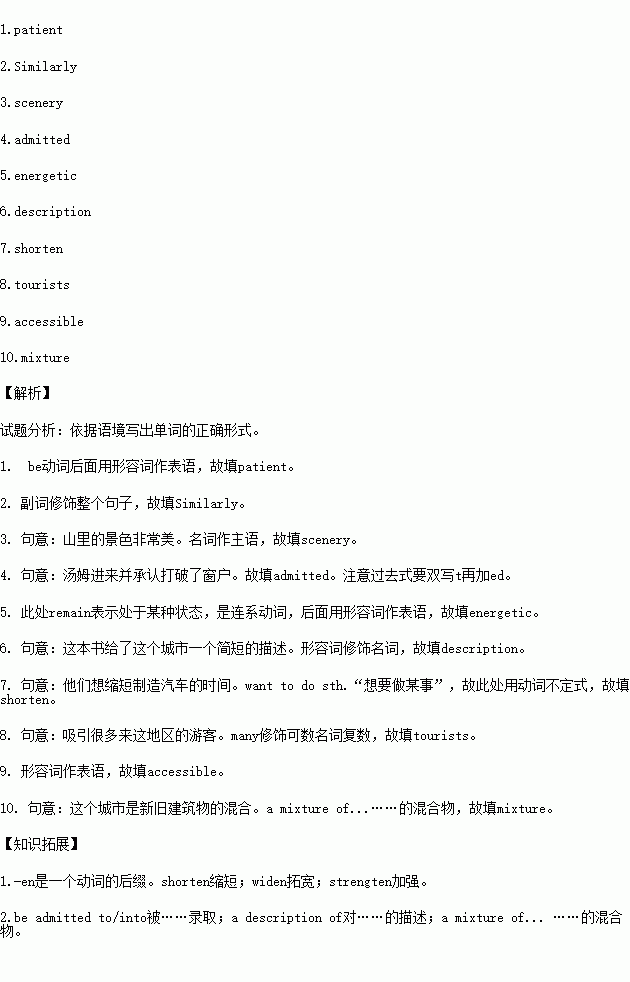题目内容
依据语境写出单词的正确形式
1.He is a little slow in understanding, so please be __________ (patience) with him.
2.Trees need water to grow. __________(similar), friendship needs our heart and passion to develop.
3.The __________ (scene) in the mountains is very beautiful.
4.Tom came and ________ (admit) breaking the window by accident.
5.He remains _____________(energy), no matter how hard he works.
6.The book gives a short ___________(describe) of the city.
7.They want to _________ (short) the time it takes to make the car.
8.The story of the Loch Ness Monster has attracted many _______ (tour) to the area.
9.The shop is easily ___________ (access) by public transport.
10.The city was a _________(mix) of old and new buildings.
练习册系列答案
相关题目


